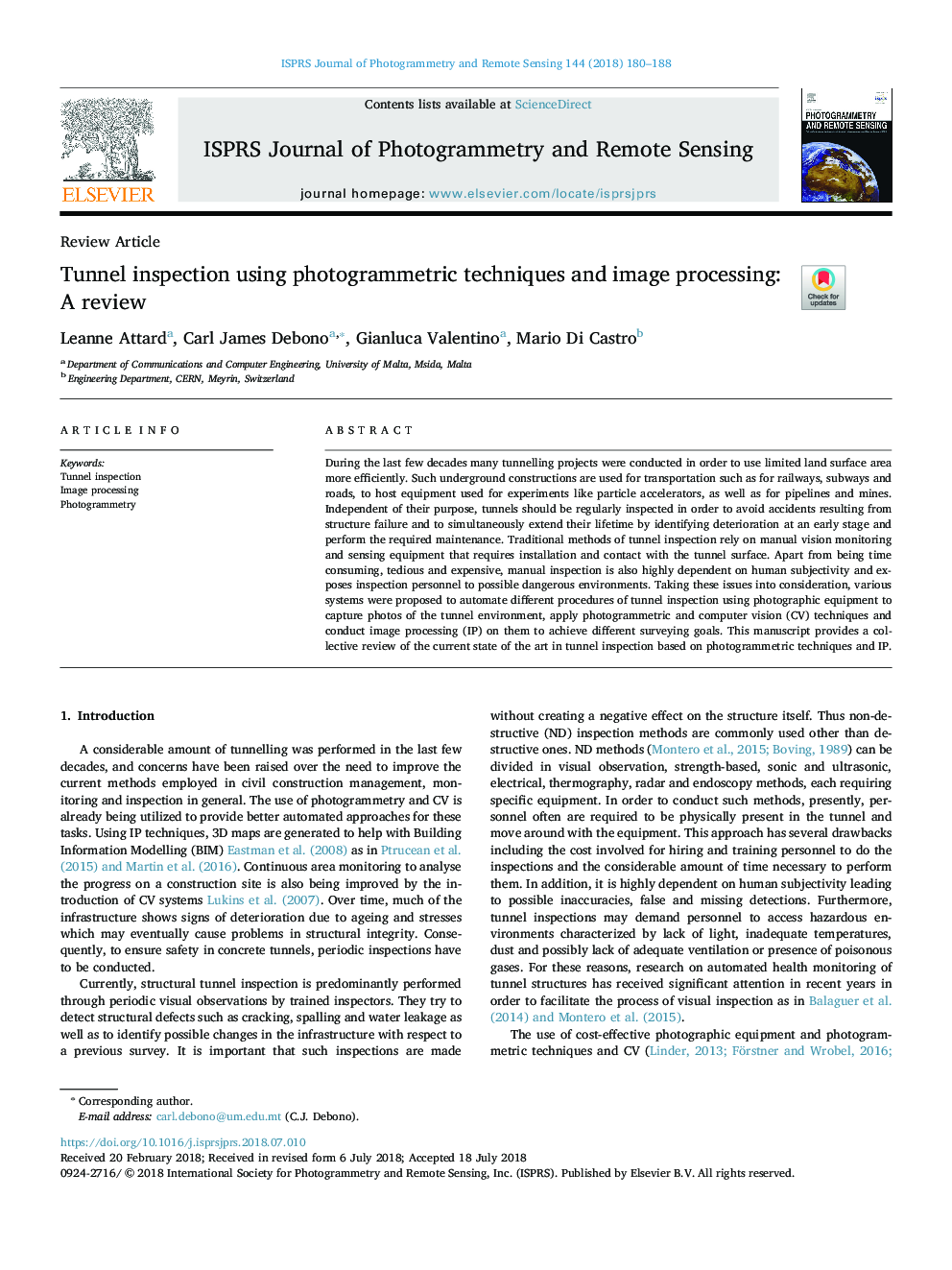| Article ID | Journal | Published Year | Pages | File Type |
|---|---|---|---|---|
| 6949029 | ISPRS Journal of Photogrammetry and Remote Sensing | 2018 | 9 Pages |
Abstract
During the last few decades many tunnelling projects were conducted in order to use limited land surface area more efficiently. Such underground constructions are used for transportation such as for railways, subways and roads, to host equipment used for experiments like particle accelerators, as well as for pipelines and mines. Independent of their purpose, tunnels should be regularly inspected in order to avoid accidents resulting from structure failure and to simultaneously extend their lifetime by identifying deterioration at an early stage and perform the required maintenance. Traditional methods of tunnel inspection rely on manual vision monitoring and sensing equipment that requires installation and contact with the tunnel surface. Apart from being time consuming, tedious and expensive, manual inspection is also highly dependent on human subjectivity and exposes inspection personnel to possible dangerous environments. Taking these issues into consideration, various systems were proposed to automate different procedures of tunnel inspection using photographic equipment to capture photos of the tunnel environment, apply photogrammetric and computer vision (CV) techniques and conduct image processing (IP) on them to achieve different surveying goals. This manuscript provides a collective review of the current state of the art in tunnel inspection based on photogrammetric techniques and IP.
Related Topics
Physical Sciences and Engineering
Computer Science
Information Systems
Authors
Leanne Attard, Carl James Debono, Gianluca Valentino, Mario Di Castro,
